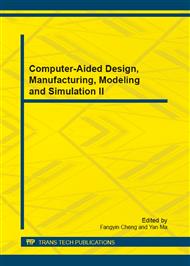p.1190
p.1194
p.1199
p.1204
p.1209
p.1214
p.1220
p.1226
p.1231
Visual Simulation of Mobile Channel Model
Abstract:
Simulink is the integrated environment of system modelling and simulation, which is being widespread used. This paper describes the MATLAB visual simulation of the propagation path loss model for telecommunication systems. We simulated the whole process of COST231-Walfisch-Ikegami model with high accuracy, built a visual simulation frame and the path loss curves are given. This method can be used in studying other propagation path loss models in propagation environments.
Info:
Periodical:
Pages:
1209-1213
Citation:
Online since:
December 2012
Authors:
Keywords:
Price:
Сopyright:
© 2013 Trans Tech Publications Ltd. All Rights Reserved
Share:
Citation:


